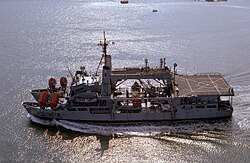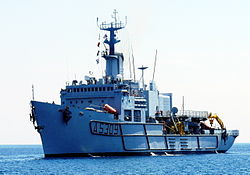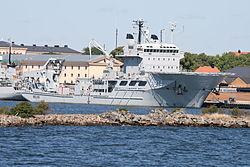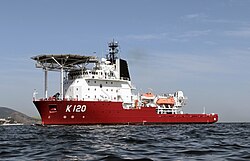




A submarine rescue ship is a surface support ship for submarine rescue and deep-sea salvage operations. Methods employed include the McCann Rescue Chamber, deep-submergence rescue vehicles (DSRV's) and diving operations. [1]
Contents
- List of active submarine rescue ships
- Royal Australian Navy
- Brazilian Navy
- Chinese Navy
- Indian Navy
- Italian Navy
- Japan Maritime Self-Defense Force
- Royal Malaysian Navy
- Republic of Singapore Navy
- South Korean Navy
- Spanish Navy
- Royal Swedish Navy
- Russian Navy
- Turkish Navy
- Vietnam People's Navy
- List of decommissioned submarine rescue ships
- Indian Navy 2
- Japan Maritime Self-Defense Force 2
- Spanish Navy 2
- United States Navy
- See also
- References